The Humanistic Nursing Theory
The Humanistic Nursing Theory guides nurses to enter the world of persons experiencing a health-related challenge, helping them become as much as they can be according to their “human potential” (Paterson & Zderad, 1976/2008). Humanistic Nursing is a “lived dialogue, a call-and-response event that occurs between a nurse and a person who come together in a nursing occasion” (Kleiman, 2009, p. 5).
“The call and response of an authentic dialogue between a nurse and patient has great power; the power to change the lived experiences of both the patient and nurse, to change the situation, to change the world” (Paterson & Zderad, 2008, p. 5). Through an intersubjective transactional relationship, the nurse nurtures well-being and more-being in persons experiencing joy, loss, pain, grief, or suffering (Paterson & Zderad, 1976/2008).
“Humanistic Nursing embraces more than a benevolent technically competent subject-object one-way relationship guided by the nurse on behalf of another” (Paterson & Zderad, 1976, p. 3). The humanistic “approach does not reject advances in nursing technology but rather tries to increase their value by viewing their use within the perspective of the development of human potential” (Paterson & Zderad, 2008, p. 5).
The call for nursing is “to maintain humanness in the health-care system, which is becoming increasingly sophisticated in technology, increasingly concerned with cost containment, and increasingly less aware of and concerned with the patient as a human being” (Kleiman, 2010, p. 349).
The Call AND Response Paper
The Call AND Response Paper provides semester three BScN students with an opportunity to explore and explicate the relevance and meaning of Paterson and Zderad’s (1976) Humanistic Nursing Theory while providing care for a patient within an acute care setting.
The Humanistic Nursing Theory Assignment
Purpose
This assignment is an exploration of a patient’s lived experience of a common health challenge and the nursing student’s response to a patient’s “call for help,” guided by Paterson and Zderad’s (1976) Humanistic Nursing Theory.
Students will follow the Call AND Response Paper Guidelines and Criteria as outlined below. Selecting an assigned patient in NURS 2525 practicum, each student will illustrate his/her unique contribution to humanistic nursing care through:
- Coming to know the patient.
- Recognizing, understanding, and responding to the patient’s call for help.
- Nurturing “well-being and more-being.”
Additionally, the student will articulate his/her expanded angular view following this intersubjective transactional nursing experience.
The Humanistic Nursing Theory Guidelines
- The paper must include an introduction and conclusion and be written according to the APA Manual 6th Edition (2010) and all assignment policies in the Collaborative BScN Program Handbook (Publication # 476) and the Georgian College Academic Calendar.
- The MAXIMUM length is 6 pages, double spaced.
- A minimum of six (6) references is required. A medical dictionary is not considered one of the required references.
- Two or more chapters cited from the same secondary source (e.g., textbook) is considered a single reference.
- A hard copy is due at the beginning of class on the due date.
Students must have their CPS sign the Call AND Response Validation Form (see below) and attach it to the front of their paper. Papers without the signed validation form attached will NOT BE ACCEPTED, and the late penalty will apply until this requirement is met.
The Humanistic Nursing Theory Assignment Criteria
1. Hearing and Recognizing the Call (5%)
- Introduce your patient, including primary health challenge and current health situation. Avoid identifying information (e.g., name, initials, age, and agency). You may use pseudo-name/initials and an age range bracket.
- Define and describe your angular view (Paterson & Zderad, 1976/2008) prior to coming to know your patient. Acknowledge any assumptions based on your previous experiences and/or your potential or actual biases.
- Describe the intersubjective dialogue (verbal/nonverbal) that occurred while coming to know your patient and his/her primary health challenge. Include details of your connection, what your patient may have said, or not said. Identify any blocks to communication that you would avoid in the future.
- Identify a priority biomedical call for help (e.g., impaired swallowing, urinary retention, acute pain) from your assigned patient that required your nursing response. This should be a single clear sentence.
2. Understanding and Responding to the Call (15%)
- (2%) Clearly state and support your assessment findings that helped you identify the priority biomedical call. Include subjective and objective data in your findings. Identify other patient data relevant to the call (e.g., lab values, diagnostic test results, radiology findings, admission history). You may include an appendix with full lab and test results to refer to in your text. Identify any priority assessments that you did not do but that, on reflection and further research, you realize might have informed your nursing response.
- (5%) Describe your actual nursing response to the patient’s priority biomedical call for help, which may include care provided collaboratively with the most responsible nurse and other intraprofessional and/or interprofessional team members. Include multiple interventions (e.g., ongoing assessment, monitoring, pharmacological, and non-pharmacological interventions). Provide referenced rationales to support all interventions. If retrospectively, on reflection and further research, you discover that further interventions could be included, note these as retrospective additions.
- (3%) Identify a nursing clinical background question related to the identified call and response for your patient, and include the answer based on research. Examples of background questions include:
- What are the best methods to relieve referred shoulder pain following laparoscopic abdominal surgery?
- What is best practice related to mobilizing patients following total hip replacement surgery?
Use evidence from the nursing literature (e.g., original qualitative/quantitative research articles, systematic reviews, meta-synthesis, and/or BPGs). Include the URL and/or DOI for your references. Textbooks should not be used. Reflect on whether your research would change your Call AND Response care plan for the patient.
- (5%) Complete and include your Call AND Response care plan table in an “Appendix” after the reference page. You may refer to this appendix in the text to avoid redundancy.
3. Well-Being and More-Being: For Patient (2.5%)
- Describe how your humanistic nursing response did or did not nurture the well-being and more-being (Paterson & Zderad, 1976/2008) for your patient. Define theoretical terms.
- How do you know you did or did not nurture the patient’s well-being? Include reassessment data to support your findings.
- How do you know you did or did not nurture more-being for your patient? Include clear and specific supportive findings.
4. Well-Being and More-Being: For Nurse (2.5%)
- As a student nurse, how did your participation in the intersubjective transactional nursing experience contribute to your more-being (Paterson & Zderad, 1976/2008)? Support findings with clarity.
- How did your angular view change or not change as a result of this interaction?
- How might your expanded view(s) impact your noetic locus (Paterson & Zderad, 1976/2008) or future nursing practice?
Theory of Humanistic Nursing
The humanistic nursing model was developed by Loretta Zderad and Josephine Paterson. The theory is based on the idea that nursing is an intersubjective transactional relationship between a patient and a nurse living in the world.
It is a method that promotes the patient’s emotional and mental health as well as physical fitness. The founders believed that nursing education should emphasize nurses’ ability to treat and interact with patients as well as their medical and scientific background.
The patient, nurse, environment, and nursing are all components of the theory. As a result, the text will provide an assessment of the theory.
Is the model in accordance with the most recent nursing standards?
Get Homework Help for Nursing Theory Assignment
Struggling with the Nursing Theory Assignment? Don’t worry—we’re here to help! Our expert team specializes in guiding nursing students like you through complex assignments. Here’s how we can help you succeed:
-
Custom Assignment Assistance: We’ll work with you to craft a well-structured, personalized paper that meets all the guidelines and criteria for the Call AND Response assignment.
-
Expert Research Support: Our team can help you identify, summarize, and integrate evidence-based research, ensuring your work is supported by reliable sources.
-
APA Formatting Made Easy: Mastering APA 6th Edition formatting can be challenging, but we’ll ensure your paper meets every requirement, from citations to the reference page.
-
Step-by-Step Guidance: Whether you need help brainstorming ideas, drafting content, or editing your final submission, we’ll guide you every step of the way.
-
Save Time and Reduce Stress: With our assistance, you can focus on other aspects of your nursing program while we help lighten your workload and ensure timely submission.
-
Confidentiality Guaranteed: Your privacy is important to us, and all your information is secure.
Don’t let the Humanistic Nursing Theory Assignment overwhelm you. Contact us today and take the first step toward submitting a thoughtful, well-crafted paper that demonstrates your commitment to compassionate, human-centered nursing care!



